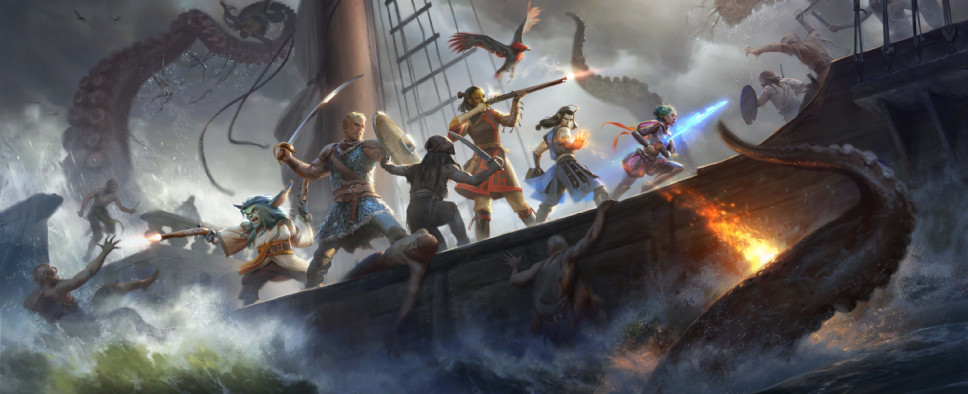Pillars of Eternity II Update: The Math of Multiclassing
-
Category: News ArchiveHits: 4510

Anyone who has ever played 3rd Edition Dungeons & Dragons knows that one of the highlights – and pitfalls – of that edition was its multi-classing system. For the novice, it might have intuitively seemed that splitting your levels between Fighter and Wizard would have made some kind of nifty battlemage. But experts knew better: a Fighter 10/Wizard 10 was only half as good as either of its base classes, and so effectively useless. Enter the Prestige Class – and all the wonderful builds and abuses that followed – and one sees how multiclassing can offer great customization but at the potential cost of effective balancing.
Despite the potential risks, Obsidian Entertainment has decided to take the plunge into the depths of multiclassing with Pillars of Eternity II: Deadfire. In a lengthy, crunchy, number-filled update, Obsidian Entertainment’s Design Director Josh Sawyer delves into the nuts and bolts behind Deadfire’s multi-classing system (including a video – complete with white board! – that reminds one of mathematics lectures).
According to Sawyer, Deadfire’s aim with multiclassed characters is to create effective hybrids with “75%-85% what a single class character would have at any given level,” which Sawyer feels is “the sweet spot where multiclass characters feel powerful and effective, but don't clearly outshine the single class characters.” And more than just mish-mashing character classes, Sawyer wants the combinations to feel unique and have their own identity:
We want the multiclassing system to keep characters viable no matter when the player chooses to multiclass. We want to limit the number of permutations to something manageable. Finally, we want to give multiclass characters a unique title for their class combo.
In tackling multi-classing, Sawyer seems to be well aware that with great power comes great responsibility, and whether you find the numbers aspect of RPGs appealing or not, it’s worth checking out what Obsidian is concocting:
I should note that although the system designers and I believe this system gives the 3E D&D-style flexibility while solving some of that system's pitfalls, the cost is clarity. Using Power Sources as an intermediate resource to keep relative advancement stable makes things less clear to players. It also allows for a margin between optimal and viable progressions; some advancement schemes will grant access to power levels unevenly. An AD&D-style multiclassing system (where the combination is chosen at character creation) would make advancement clearer for players (and easier for us to balance) at the cost of player flexibility.
Additionally, with the Fig crowdfunding having recently broken the $2 million mark, Obsidian has posted two more stretch goals: more voiceover work and NPC portraits. Three weeks still remain in the fundraising campaign.

